Beetles
Beetles abound—not just here, but everywhere. There are probably many more local species of beetles than there are of birds, so this small page can do little more than acknowledge their presence.
Most adult insects have two pairs of wings. In beetles, the forewings have become hardened cases which cover and protect the hind wings and the abdomen. A common colour for a beetle is black, but there are variations (ladybugs, may beetles).
The identifications offered on this page should be treated with skepticism; my entomological insights are scanty.
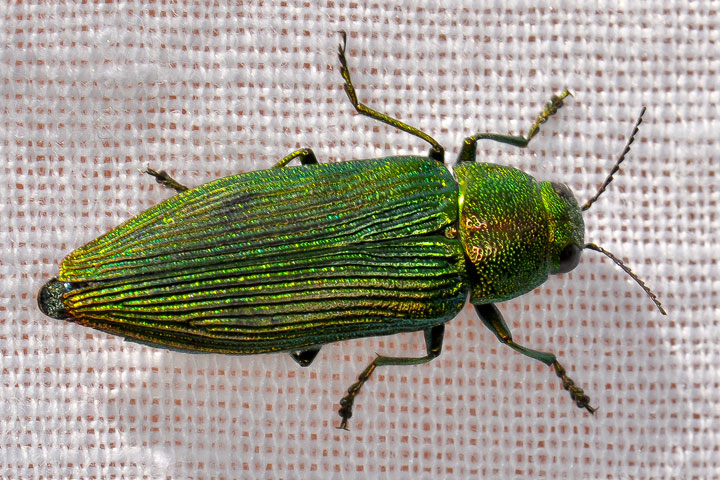 This golden bruprestid also known as the golden jewel beetle (Buprestis aurulenta) was hard to miss, landing as it did on a white blouse. The beetles lay eggs in cracks near tree injuries especially douglas fir and ponderosa pine. The larvae mine under the bark or through the wood.
This golden bruprestid also known as the golden jewel beetle (Buprestis aurulenta) was hard to miss, landing as it did on a white blouse. The beetles lay eggs in cracks near tree injuries especially douglas fir and ponderosa pine. The larvae mine under the bark or through the wood.
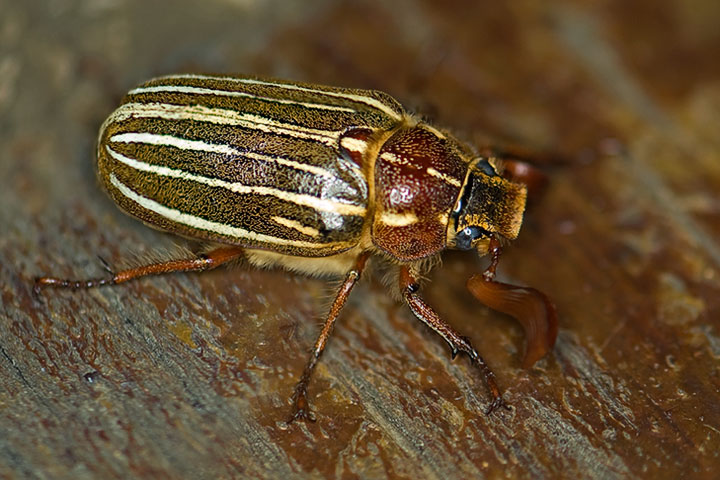 The Ten–lined June Beetle is our largest scarab beetle.
The Ten–lined June Beetle is our largest scarab beetle.
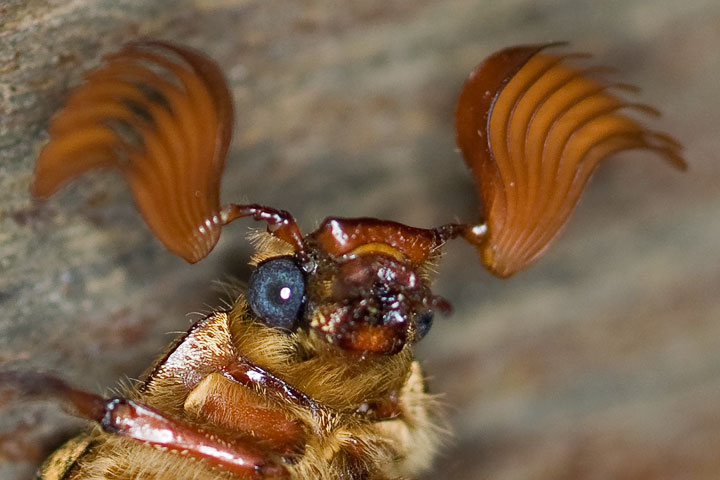 The many leaves of the male June Beetle’s antennae serve to detect the scent of the female.
The many leaves of the male June Beetle’s antennae serve to detect the scent of the female.
 Hi, my friends call me June.
Hi, my friends call me June.
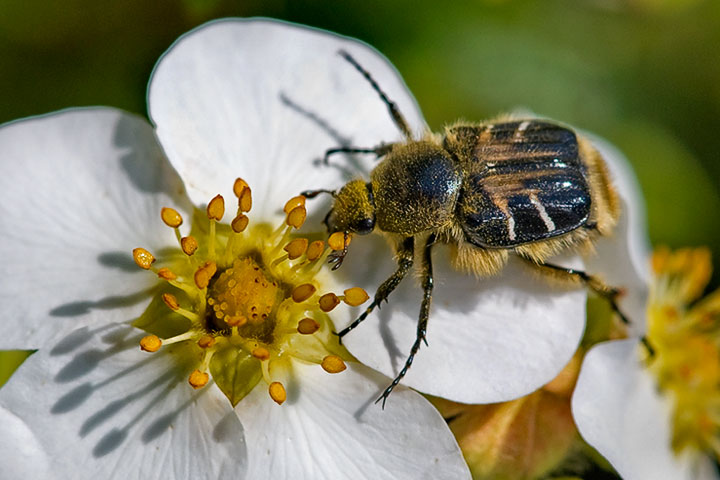 Covered in golden pollen from the flower, this is a Bee Mimic Beetle (Trichiotinus assimilis).
Covered in golden pollen from the flower, this is a Bee Mimic Beetle (Trichiotinus assimilis).
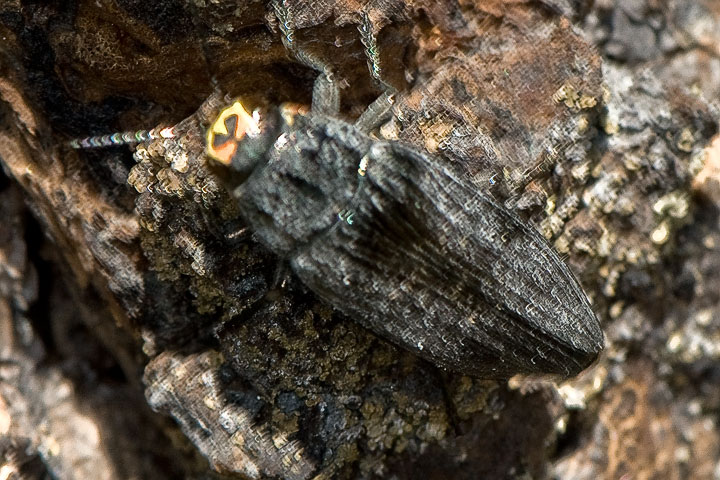 This wood–boring beetle (Buprestis lyrata) sits on the bark of a Douglas Fir, a tree it is known to favour. Although sometimes called the pink–faced jewel beetle, its face is closer to yellowish orange.
This wood–boring beetle (Buprestis lyrata) sits on the bark of a Douglas Fir, a tree it is known to favour. Although sometimes called the pink–faced jewel beetle, its face is closer to yellowish orange.
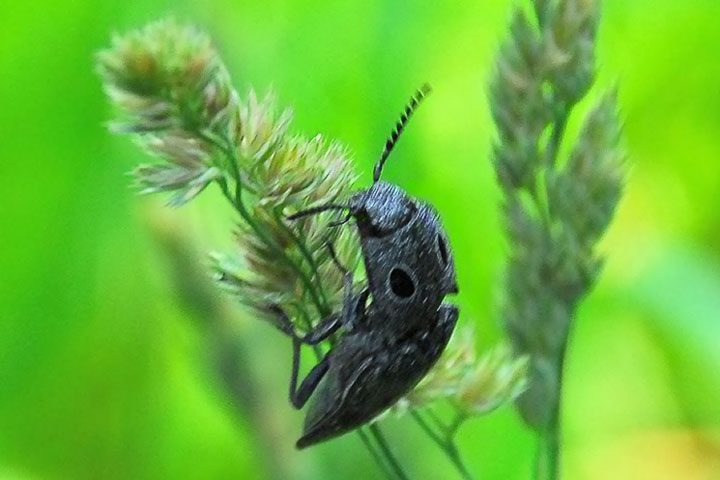 The Western Eyed Click Beetle is a large insect, and is easily recognized by the two eyespots on its back (pronotum). Both these eyespots and the click—where it launches itself into the air with a sudden sound—probably serve to startle predators. The click beetle mainly makes its home in rotting wood.
The Western Eyed Click Beetle is a large insect, and is easily recognized by the two eyespots on its back (pronotum). Both these eyespots and the click—where it launches itself into the air with a sudden sound—probably serve to startle predators. The click beetle mainly makes its home in rotting wood.
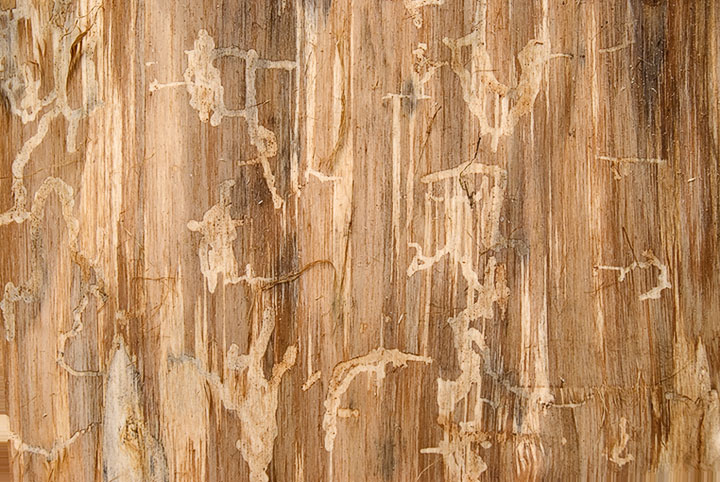 Beetle art Beetles are common under the bark of dead or dying trees where they leave tracks. Sometimes the beetles are the primary cause of death, but often they are simply responding to a newly available resource as a tree dies. The patterns etched into the sapwood are often characteristic of a particular species; these ones likely belong to a species of wood borer.
Beetle art Beetles are common under the bark of dead or dying trees where they leave tracks. Sometimes the beetles are the primary cause of death, but often they are simply responding to a newly available resource as a tree dies. The patterns etched into the sapwood are often characteristic of a particular species; these ones likely belong to a species of wood borer.
 A male Spruce Sawyer (Monochamu scutellatus), with its amazingly long antennae, has landed on some lawn furniture. These beetles emerge from pupae below the bark of dead spruce trees and then set about finding a mate.
A male Spruce Sawyer (Monochamu scutellatus), with its amazingly long antennae, has landed on some lawn furniture. These beetles emerge from pupae below the bark of dead spruce trees and then set about finding a mate.
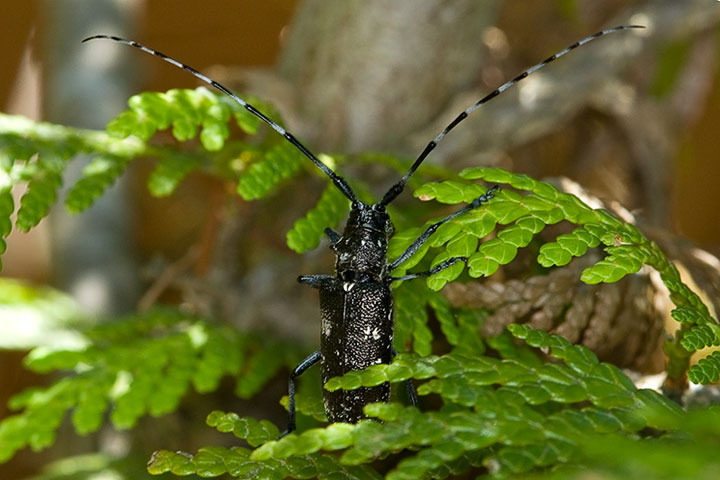 A female Spruce Sawyer (Monochamu scutellatus) with has spots on its wingcovers.
A female Spruce Sawyer (Monochamu scutellatus) with has spots on its wingcovers.
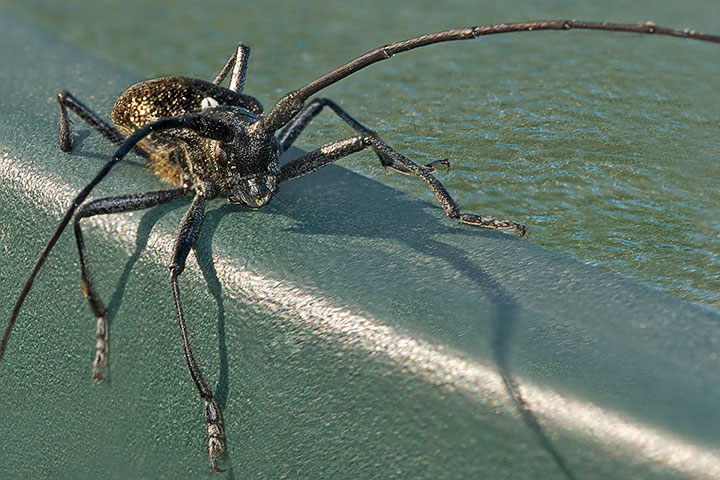 A close up of the male Spruce Sawyer beetle.
A close up of the male Spruce Sawyer beetle.
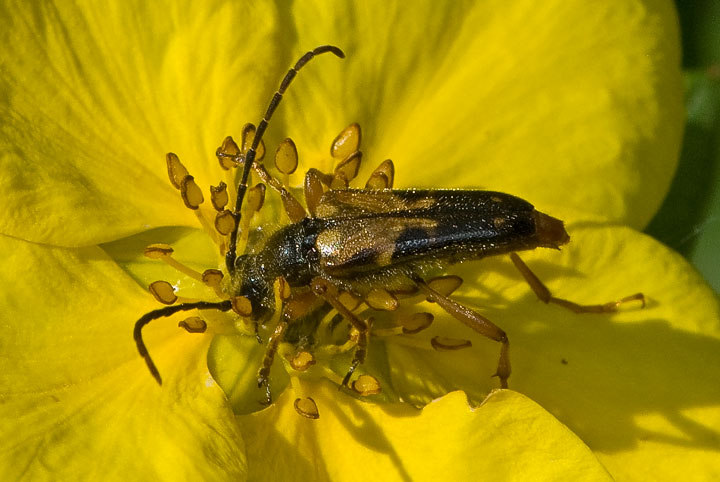 There are many species of Flower Longhorn Beetle (Lepterinae). This, and the adjacent image show two of them.
There are many species of Flower Longhorn Beetle (Lepterinae). This, and the adjacent image show two of them.
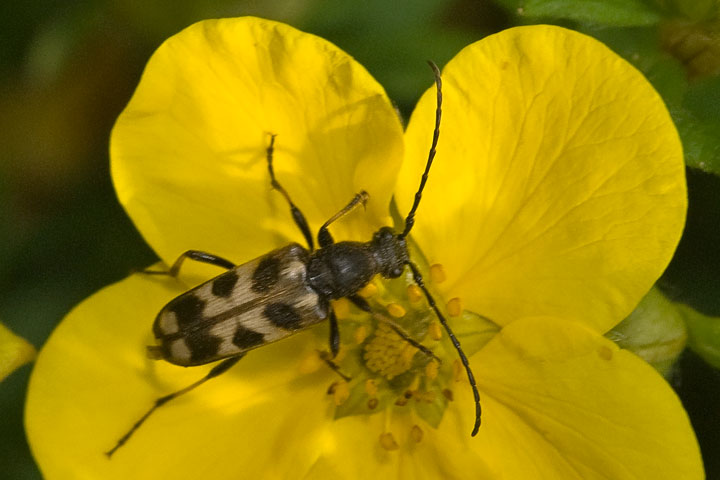 There are many species of Flower Longhorn Beetle (Lepterinae). This, and the adjacent image show two of them.
There are many species of Flower Longhorn Beetle (Lepterinae). This, and the adjacent image show two of them.
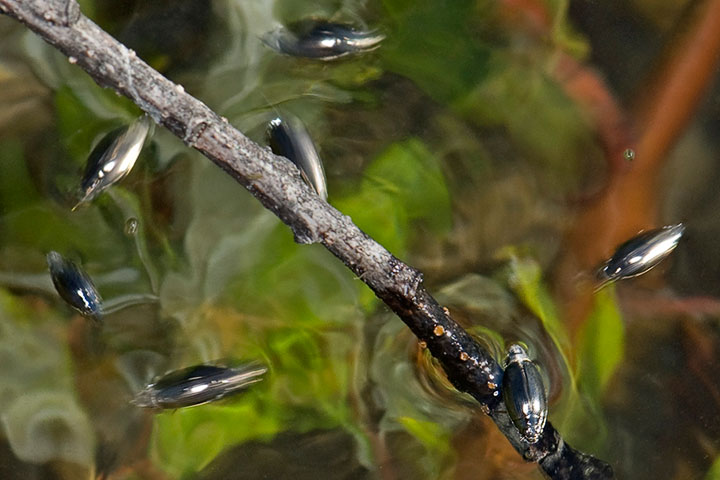 The Whirligig Beetle is an amazingly rapid swimmer, a skill it uses to catch (and consume) almost any other bug it finds on the water’s surface.
The Whirligig Beetle is an amazingly rapid swimmer, a skill it uses to catch (and consume) almost any other bug it finds on the water’s surface.
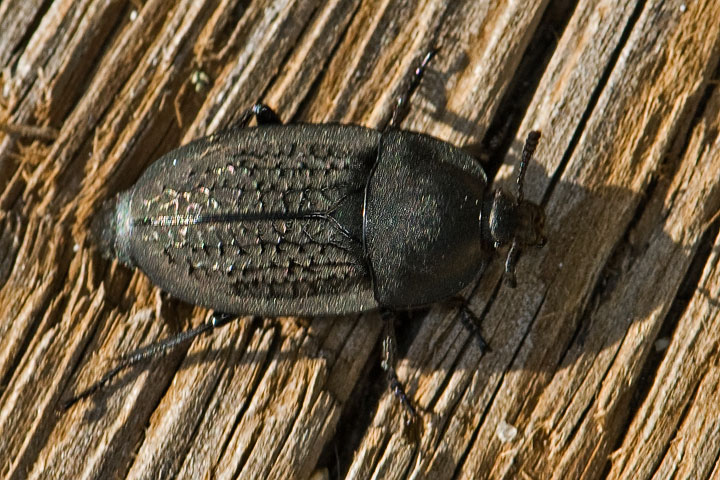 Unknown beetle.
Unknown beetle.
 This fearsome looking predator is a tiger beetle, likely the Pacific Tiger Beetle. Tiger beetles are known for their speed at both running and flying. They hunt smaller insects by chasing them down and grabbing them with the large, curved mandibles.
This fearsome looking predator is a tiger beetle, likely the Pacific Tiger Beetle. Tiger beetles are known for their speed at both running and flying. They hunt smaller insects by chasing them down and grabbing them with the large, curved mandibles.
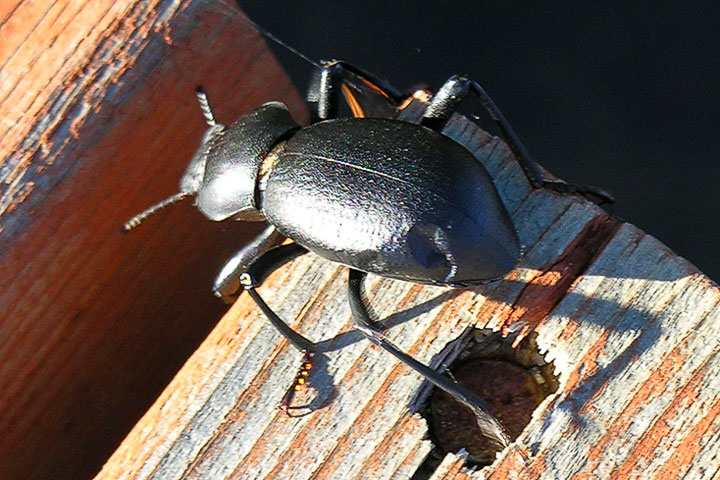 This is a carabid, likely a Carabus taedatus. Carabids are ground beetles and most are shiny black. They hide under litter, logs and rocks during the day. They feed on insects, particularly caterpillars.
This is a carabid, likely a Carabus taedatus. Carabids are ground beetles and most are shiny black. They hide under litter, logs and rocks during the day. They feed on insects, particularly caterpillars.
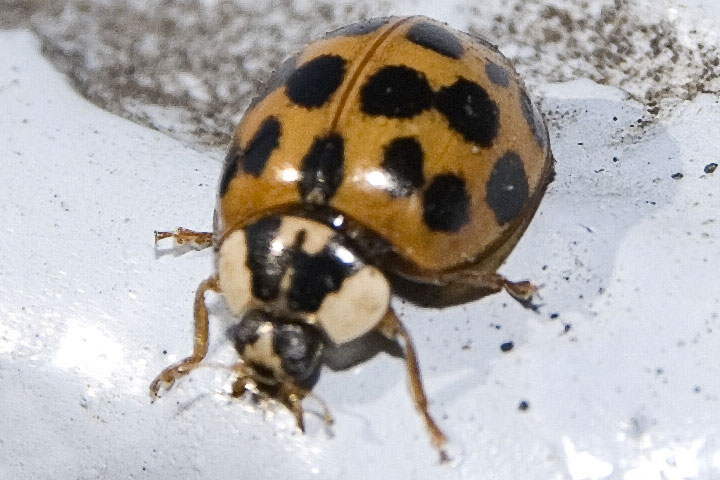 The Ladybug is probably everyone’s favourite beetle. It is not only attractive, but it preys on plant–sucking bugs such as aphids. Consequently, the ladybug is often used for pest control. This one is a Southern Ladybug, a species imported from the Orient into Washington State which is now common around the Lake.
The Ladybug is probably everyone’s favourite beetle. It is not only attractive, but it preys on plant–sucking bugs such as aphids. Consequently, the ladybug is often used for pest control. This one is a Southern Ladybug, a species imported from the Orient into Washington State which is now common around the Lake.
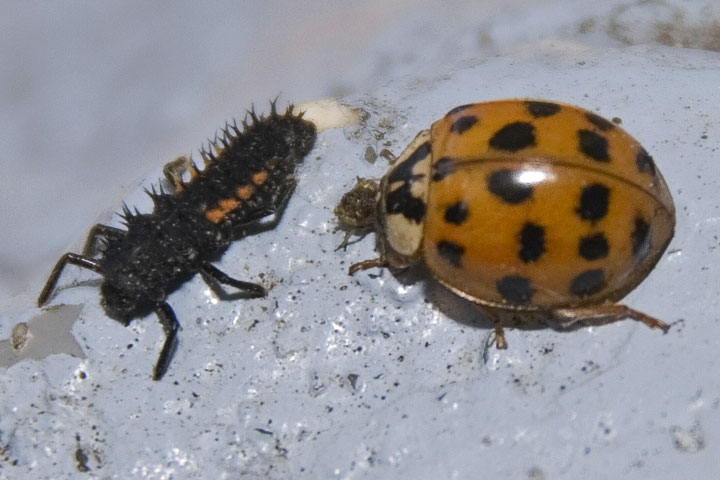 The Ladybug and the Ladybug Larva (the spiky–looking caterpillar on the left). The larva are also predators.
The Ladybug and the Ladybug Larva (the spiky–looking caterpillar on the left). The larva are also predators.
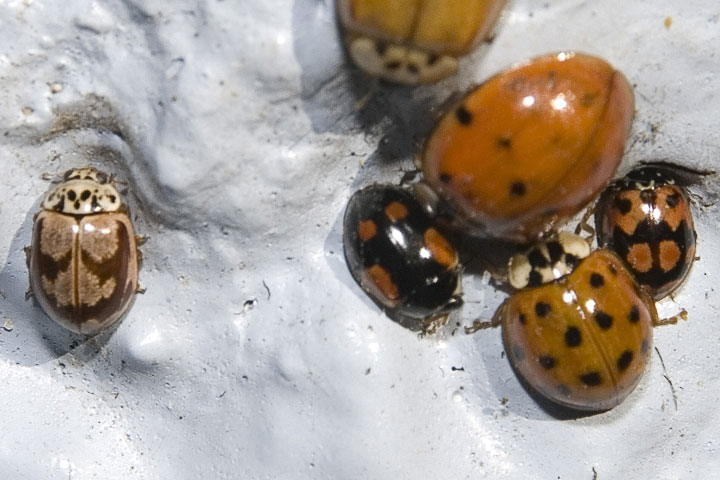 Ladybugs come in a wide range of patterns which vary with species and even within species.
Ladybugs come in a wide range of patterns which vary with species and even within species.
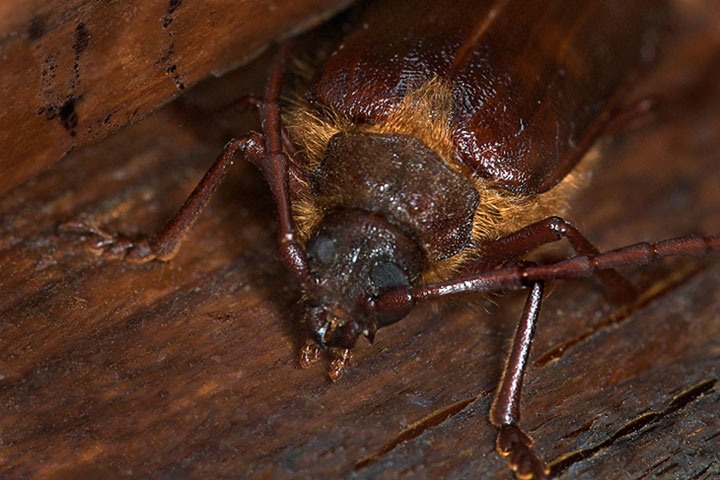 This looks like one of the longhorn wood–boring beetles.
This looks like one of the longhorn wood–boring beetles.
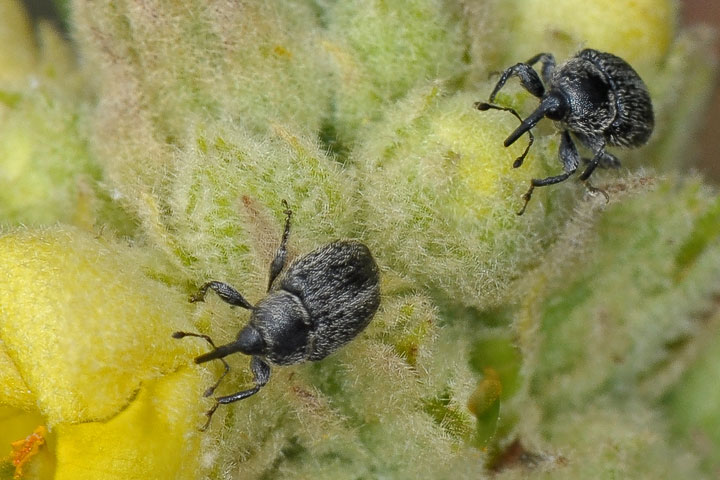 The weevil is a small herbaceous beetle.
The weevil is a small herbaceous beetle.
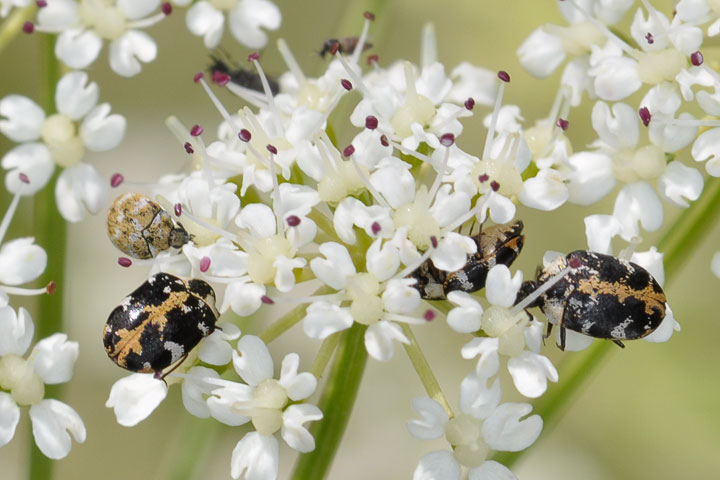 These tiny bugs (~2mm) are known as Carpet Beetles. The three in the foreground are Buffalo Carpet Beetles (Anthrenus scrophulariae) while the one in the left may be a Varied Carpet Beetle (Anthrenus verbasci).
These tiny bugs (~2mm) are known as Carpet Beetles. The three in the foreground are Buffalo Carpet Beetles (Anthrenus scrophulariae) while the one in the left may be a Varied Carpet Beetle (Anthrenus verbasci).
![]()